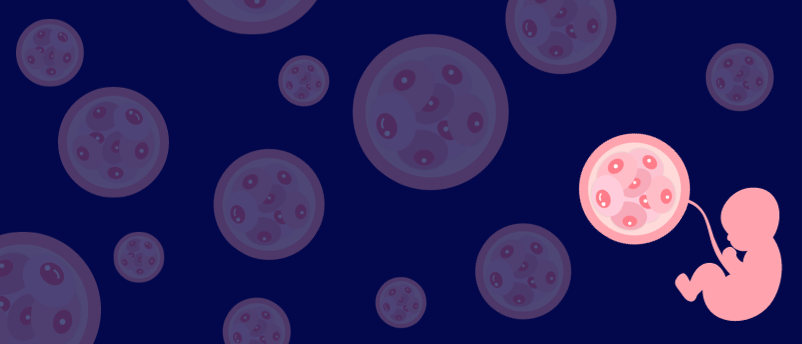
BioTechniques News
Beatrice Bowlby

Scientists interrogate leftover culture media to noninvasively determine the quality of embryos in the lab, providing a way to better predict in-vitro-fertilization (IVF) success.
Researchers at the University of California, San Diego (CA, USA) have found that lab-grown embryos’ leftover culture media can be used to predict the success of IVF, a fertility treatment in which eggs are fertilized in the lab before being implanted in the uterus. IVF is a complex and multi-step process with a low success rate, which is due in large part to there not being a clear protocol for embryo selection. Therefore, the development of this noninvasive method has great potential to streamline fertility treatment and increase IVF’s success rate.
Currently, when doctors are selecting the lab-grown embryos for implantation, they rely on morphological characteristics or biopsies of the embryos. However, both have limitations, which can lead to unsuccessful IVF treatment.
Instead, the team developed a new noninvasive blood-test-like method that can detect exRNAs – small particles of genetic material – left in the culture media that embryos are grown in. Although most genetic material remains inside our cells, cells release exRNA into their surroundings for a reason not yet fully understood by scientists. Despite our lack of understanding regarding the exact function of exRNAs, they became a genetic material of interest with potential to offer insights into cellular communication and disease processes after their discovery in the early 2000s.
 Cradle cultures: growing stem cell-derived developmental cell models in vitro
Cradle cultures: growing stem cell-derived developmental cell models in vitro
How are three stem cell-derived developmental cell models furthering our understanding of post-implantation human embryo development?
Using small input liquid volume extracellular RNA sequencing (SILVER-seq), the team analyzed the exRNAs in the culture media of embryos at five different developmental stages. Per stage, they found approximately 4000 different exRNA molecules, which correspond to each stage of embryo development. Using this exRNA data, the team then trained a machine learning algorithm to predict embryo morphology. The model could successfully replicate the morphological measurements that are currently used in embryo quality tests, indicating that exRNAs could be a valuable predictor of embryo quality.
“We were surprised by how many exRNAs were produced so early in embryonic development, and how much of that activity we could detect using such a minute sample,” remarked co-senior author Sheng Zhong. “This is an approach where we can analyze a sample from outside a cell and gain an incredible amount of insight into what’s happening inside it.”
Although this study has shown promising results, further research is necessary to confirm whether exRNA’s can be used to predict successful births. “We have data connecting healthy morphology to positive IVF outcomes, and now we’ve seen that exRNAs can be used to predict good morphology, but we still need to draw that final line before our test will be ready for primetime,” concluded co-senior author Irene Su. “Once that work is done, we hope this will make the overall process of IVF simpler, more efficient, and ultimately less of an ordeal for the families seeking this treatment.”
The post How doctors can better predict embryo quality for IVF appeared first on BioTechniques.
Powered by WPeMatico
